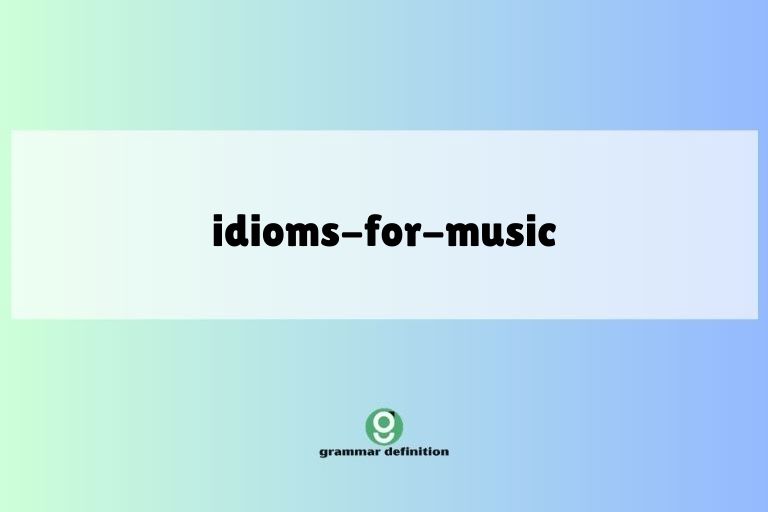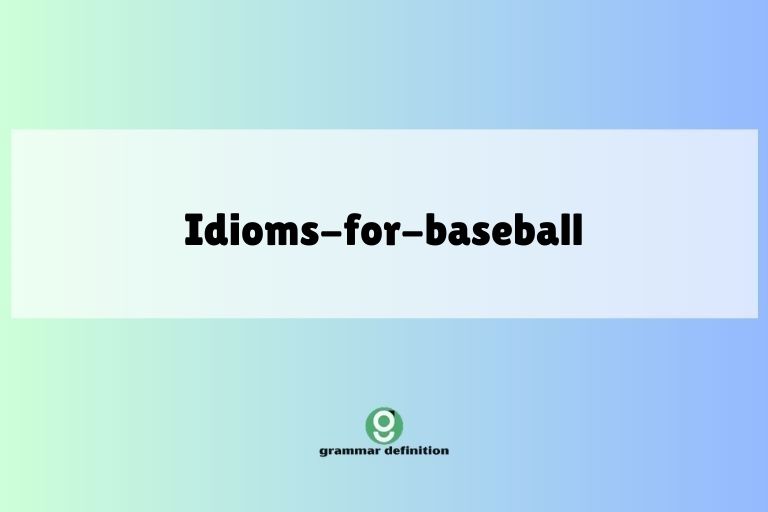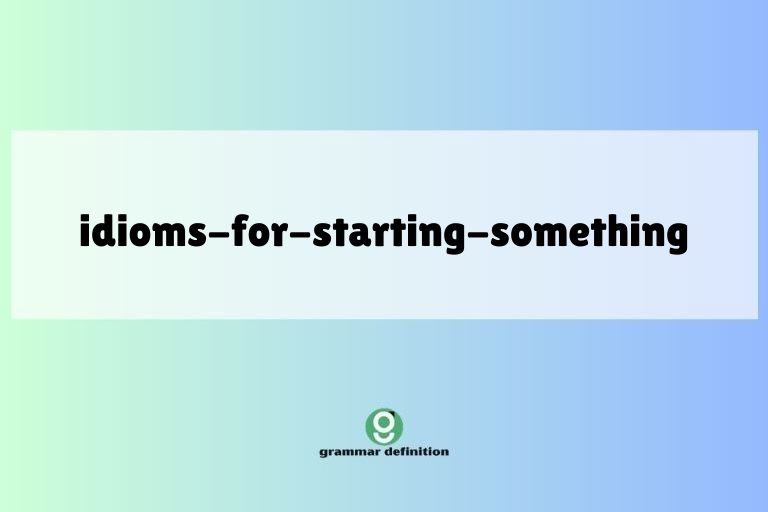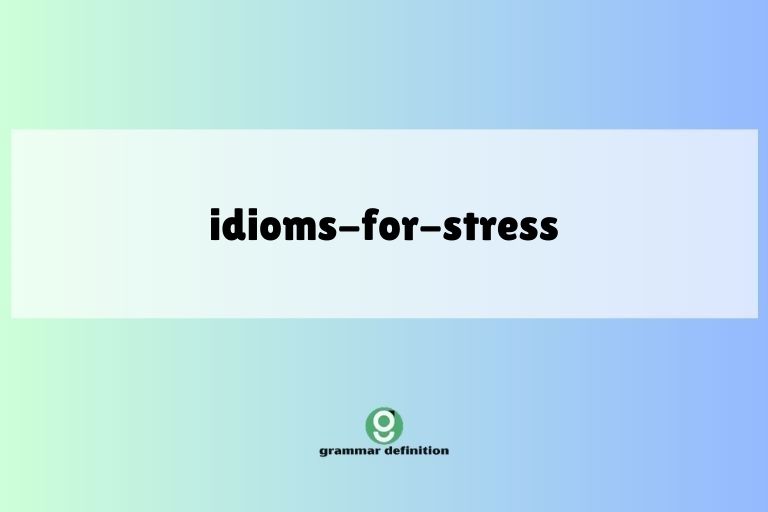Musical Idioms: Mastering Figurative Language in Music

Idioms enrich the English language, adding color and depth to our conversations and writing. Understanding idioms, especially those related to music, is crucial for grasping the nuances of English communication.
This article delves into the world of musical idioms, exploring their meanings, origins, and usage. Whether you’re an English language learner, a music enthusiast, or simply someone looking to expand their vocabulary, this comprehensive guide will help you master the art of using and understanding idioms related to music.
This guide is designed for English language learners, music enthusiasts, and anyone looking to expand their vocabulary and improve their understanding of figurative language. By exploring the meanings, origins, and usage of these idioms, you’ll gain a deeper appreciation for the richness and expressiveness of the English language.
Get ready to strike a chord with your communication skills!
Table of Contents
- Definition of Musical Idioms
- Structural Breakdown of Musical Idioms
- Types and Categories of Musical Idioms
- Examples of Musical Idioms
- Usage Rules for Musical Idioms
- Common Mistakes with Musical Idioms
- Practice Exercises
- Advanced Topics in Musical Idioms
- Frequently Asked Questions
- Conclusion
Definition of Musical Idioms
An idiom is a phrase or expression whose meaning cannot be understood from the literal meanings of its individual words. Instead, idioms have a figurative meaning that is culturally specific.
Musical idioms are idioms that use musical terms or concepts to convey a non-literal meaning. They draw upon our shared understanding of music to express ideas, emotions, or situations in a vivid and memorable way.
These idioms add color and depth to the English language, making communication more engaging and expressive.
Musical idioms often rely on metaphors, similes, and other figures of speech to create their unique meanings. For instance, the idiom “face the music” doesn’t literally involve encountering music; it means facing the consequences of one’s actions.
Similarly, “strike a chord” doesn’t refer to playing a musical chord but rather to evoking an emotional response in someone. Understanding these figurative meanings is essential for comprehending and using musical idioms effectively.
Classification of Musical Idioms
Musical idioms can be classified based on the specific musical element they reference. Some idioms relate to rhythm and tempo, while others reference harmony, melody, or musical instruments.
Understanding these classifications can help you grasp the underlying meaning and context of each idiom.
For example, idioms like “change your tune” and “sing a different song” relate to the act of performing music and changing one’s perspective or behavior. On the other hand, idioms like “it takes two to tango” draw upon the idea of musical partnership and collaboration.
By recognizing these underlying musical themes, you can better understand and appreciate the nuances of musical idioms.
Function of Musical Idioms
Musical idioms serve several functions in communication. They can add emphasis, humor, or emotional depth to a conversation or piece of writing.
They can also provide a concise and memorable way to express complex ideas or situations. By using musical idioms effectively, you can enhance your communication skills and make your language more engaging and impactful.
Furthermore, musical idioms can help to establish a sense of shared understanding and cultural connection. When you use an idiom that is familiar to your audience, you create a sense of rapport and connection.
This can be particularly effective in persuasive writing or public speaking, where building trust and credibility is essential.
Contexts for Using Musical Idioms
Musical idioms can be used in a variety of contexts, including formal and informal conversations, written communication, and creative writing. However, it’s important to consider your audience and the overall tone of the communication before using an idiom.
In some cases, a more direct and literal expression may be more appropriate.
For instance, in a formal business setting, it may be best to avoid using overly colloquial or informal idioms. On the other hand, in a casual conversation with friends, using musical idioms can add a touch of humor and personality to your language.
The key is to be mindful of the context and choose idioms that are appropriate for the situation.
Structural Breakdown of Musical Idioms
Musical idioms, like all idioms, often consist of a fixed sequence of words that cannot be altered without changing the meaning or making the phrase nonsensical. Understanding the structural elements of these idioms can help you recognize and use them correctly.
Many musical idioms follow a basic subject-verb-object structure, where the subject is the person or thing performing the action, the verb is the musical action being performed, and the object is the thing being acted upon. For example, in the idiom “strike a chord,” the subject is typically an event or statement, the verb is “strike,” and the object is “a chord.”
Common Patterns in Musical Idioms
Several common patterns appear in musical idioms. One common pattern involves using musical instruments or terms as metaphors for people or situations.
For example, “second fiddle” refers to playing a supporting role, while “calling the shots” refers to being in control.
Another common pattern involves using musical actions or events to describe emotional states or experiences. For example, “singing the blues” refers to feeling sad or depressed, while “changing your tune” refers to changing your opinion or behavior.
By recognizing these common patterns, you can more easily understand and interpret musical idioms.
Rules Governing Musical Idiom Structure
While idioms are generally fixed expressions, there are some rules governing their structure and usage. One important rule is that the words in an idiom cannot be changed or substituted without altering the meaning.
For example, you cannot say “hit a chord” instead of “strike a chord” without changing the meaning or making the phrase sound awkward.
Another rule is that idioms should be used in a grammatically correct way. Even though idioms have a figurative meaning, they should still be used in sentences that follow the rules of grammar.
For example, you should say “He had to face the music” rather than “He had to faces the music.”
Types and Categories of Musical Idioms
Musical idioms can be categorized in various ways, depending on the specific musical elements they reference. Here are some common types and categories of musical idioms:
Idioms Related to Rhythm and Tempo
These idioms use concepts of rhythm and tempo to describe the pace or flow of events or actions. They often refer to whether something is happening quickly, slowly, or in a steady and predictable manner.
Examples include “march to the beat of your own drum,” which means to live your life according to your own rules and values, and “in sync,” which means to be in agreement or harmony with someone or something.
Idioms Related to Harmony and Melody
These idioms use concepts of harmony and melody to describe relationships, emotions, or ideas. They often refer to whether things are in agreement, conflict, or balance.
Examples include “strike a chord,” which means to evoke an emotional response, and “sing from the same hymn sheet,” which means to be in agreement or have the same ideas.
Idioms Related to Musical Instruments
These idioms use musical instruments as metaphors for people, things, or situations. They often refer to the role or function that someone or something plays in a particular context.
Examples include “second fiddle,” which means to play a supporting role, and “blow your own trumpet,” which means to boast or brag about your own achievements.
Idioms Related to Musical Performance
These idioms use the act of performing music to describe actions, behaviors, or events. They often refer to whether someone is performing well, making progress, or changing their approach.
Examples include “change your tune,” which means to change your opinion or behavior, and “face the music,” which means to face the consequences of your actions.
Examples of Musical Idioms
Here are some examples of musical idioms, organized by category, to help you understand their meanings and usage:
Rhythm and Tempo Idioms
The following table provides examples of idioms related to rhythm and tempo. Each entry includes the idiom, its meaning, and an example sentence.
| Idiom | Meaning | Example Sentence |
|---|---|---|
| March to the beat of your own drum | To live your life according to your own rules and values | She decided to march to the beat of her own drum and start her own business. |
| In sync | In agreement or harmony | The dancers were perfectly in sync with each other. |
| Offbeat | Unconventional or unusual | He has an offbeat sense of humor that always makes me laugh. |
| Hit the right note | To do or say something that is appropriate or well-received | His speech hit the right note with the audience. |
| A different tune | A change in attitude or behavior | After the evidence was presented, he started singing a different tune. |
| Call the tune | To be in control or make the decisions | As the CEO, she gets to call the tune in the company. |
| Keep pace | To move or progress at the same rate as someone or something else | It’s hard to keep pace with all the new technology. |
| Set the pace | To establish the rate or speed at which something happens | The new CEO is determined to set the pace for innovation. |
| Fast track | A rapid or accelerated path to success | She was on the fast track to becoming a partner at the law firm. |
| Slow down | To reduce speed or intensity | You need to slow down and take a break before you burn out. |
| Get into the rhythm | To become accustomed to a routine or pattern | After a few weeks, I finally got into the rhythm of my new job. |
| Lose the rhythm | To break the routine or pattern | The power outage caused us to lose the rhythm of the production line. |
| Keep in step | To stay in agreement or harmony with others | It’s important to keep in step with the latest trends in the industry. |
| Out of step | Not in agreement or harmony with others | His views were out of step with the rest of the group. |
| Moving to a different beat | Acting differently than others, often in a positive, innovative way. | While everyone else followed the standard procedures, she was moving to a different beat, finding creative solutions. |
| In time | Occurring at the right moment; punctual | The ambulance arrived in time to save the accident victim. |
| Behind time | Late or not on schedule | The project is running behind time due to unforeseen delays. |
| Ahead of time | Early or before the scheduled time | She finished the report ahead of time, impressing her boss. |
| Tempo up | To increase the pace or speed | Let’s tempo up the work so we can meet the deadline. |
| Tempo down | To decrease the pace or speed | We need to tempo down a bit to avoid making mistakes. |
| Time signature | The defining characteristic or essence of something | Honesty is the time signature of a good friendship. |
| Keep time | To maintain a consistent rhythm or pace | The drummer’s job is to keep time for the rest of the band. |
| Miss a beat | To hesitate or pause momentarily | He missed a beat when he heard the surprising news. |
| On the beat | Alert, aware, and up-to-date | The journalist was always on the beat, reporting the latest stories. |
Harmony and Melody Idioms
The following table provides examples of idioms related to harmony and melody. Each entry includes the idiom, its meaning, and an example sentence.
| Idiom | Meaning | Example Sentence |
|---|---|---|
| Strike a chord | To evoke an emotional response | Her story struck a chord with many people in the audience. |
| Sing from the same hymn sheet | To be in agreement or have the same ideas | The team members need to sing from the same hymn sheet to achieve their goals. |
| Clear as a bell | Very clear and easy to understand | Her instructions were as clear as a bell. |
| Music to my ears | Something that is very pleasing or welcome to hear | The news of his promotion was music to my ears. |
| Sweeten the pot | To make an offer more attractive | The company decided to sweeten the pot with a signing bonus. |
| Flat note | An insincere or unconvincing statement | His apology fell flat with everyone who heard it. |
| Ring true | To sound genuine or authentic | Her explanation rang true to the investigators. |
| Out of tune | Not in harmony or agreement | Their opinions were out of tune with each other. |
| Well-tuned | Working smoothly and efficiently | The new marketing strategy is well-tuned to attract younger audiences. |
| In harmony | In agreement or concord | The countries need to work in harmony to resolve the conflict. |
| Off-key | Inappropriate or unsuitable | His joke was off-key and offended several people. |
| Sharp note | A critical or harsh remark | During the review, the manager made a sharp note about the report’s lack of detail. |
| Melody of life | The overall pleasant and harmonious experience of life | Traveling the world and meeting new people added to the melody of her life. |
| Harmonious relationship | A peaceful and cooperative connection between people | The siblings maintained a harmonious relationship despite their differences. |
| Sour note | An unpleasant or discordant element in an otherwise positive situation | The argument with her friend put a sour note on the otherwise enjoyable evening. |
| Perfect pitch | An innate ability to do something flawlessly | She had a perfect pitch for languages, picking them up effortlessly. |
| Resonate with | To evoke a feeling of shared emotion or belief | The speaker’s words resonated deeply with the audience. |
| Discordant | Lacking harmony or agreement | Their discordant views on politics often led to heated debates. |
| Sing praises | To express enthusiastic approval or admiration | The critics are singing praises of the new movie. |
| Tone-deaf | Lacking sensitivity or awareness | His tone-deaf response to the tragedy was widely criticized. |
| Find your voice | To discover and express your true self | Through writing, she was able to find her voice and share her story with the world. |
| A chorus of approval | Widespread agreement or support | There was a chorus of approval for the new policy. |
| Hit a high note | To achieve a great success or peak performance | The company hit a high note with its record-breaking sales last quarter. |
| Hit a low note | To experience a setback or failure | The team hit a low note when they lost the championship game. |
Musical Instrument Idioms
The following table provides examples of idioms related to musical instruments. Each entry includes the idiom, its meaning, and an example sentence.
| Idiom | Meaning | Example Sentence |
|---|---|---|
| Second fiddle | To play a supporting role | He always felt like he was playing second fiddle to his more successful brother. |
| Blow your own trumpet | To boast or brag about your own achievements | He’s always blowing his own trumpet about how great he is. |
| Pull out all the stops | To do everything possible to achieve a goal | The company pulled out all the stops to win the contract. |
| Fine-tune | To make small adjustments to improve something | We need to fine-tune the marketing strategy to reach a wider audience. |
| Play it by ear | To improvise or proceed without a plan | We don’t have a set schedule, so we’ll just have to play it by ear. |
| Strike a sour note | To create an unpleasant or discordant situation | His rude comment struck a sour note at the party. |
| Sounding board | Someone you can discuss your ideas with | He uses his mentor as sounding board to test his business ideas. |
| Change the record | To move on to a different topic | Let’s change the record and talk about something more positive. |
| Drum up support | To try to gain support or enthusiasm for something | The politician is trying to drum up support for his new policy. |
| Face the music | To face the consequences of your actions | He had to face the music after he was caught cheating. |
| Off the record | Not intended for public knowledge or quotation | The journalist spoke to the source off the record. |
| Pipe down | To be quiet or stop talking | The teacher told the students to pipe down. |
| Trumpet your successes | To loudly proclaim your achievements | She never misses an opportunity to trumpet her successes. |
| A broken record | Someone who repeats the same thing over and over | He sounds like a broken record, always complaining about the same things. |
| Play second fiddle | To be in a subordinate position or role | In their partnership, she always had to play second fiddle to his ideas. |
| Blow the whistle | To report illegal or unethical activity | He decided to blow the whistle on the company’s fraudulent practices. |
| Call the shots | To make the decisions or be in control | As the team leader, she gets to call the shots. |
| Fine-tuned | Precisely adjusted or perfected | The engine was fine-tuned for optimal performance. |
| Horn in | To intrude or interfere | He always tries to horn in on our conversations. |
| Sing a different tune | To change your opinion or behavior | After hearing the evidence, he started to sing a different tune. |
| Saxophone solo | A prominent or showy display of skill or talent | The CEO’s speech was a saxophone solo, showcasing his leadership abilities. |
| Play the same old song | To repeat the same complaints or excuses | He’s always playing the same old song about how unfair life is. |
| Drum something into someone | To teach something by constant repetition | The coach drummed the fundamentals into the players. |
| Violin virtuoso | Someone with exceptional skill and artistry | She was a violin virtuoso, captivating audiences with her performances. |
Musical Performance Idioms
The following table provides examples of idioms related to musical performance. Each entry includes the idiom, its meaning, and an example sentence.
| Idiom | Meaning | Example Sentence |
|---|---|---|
| Change your tune | To change your opinion or behavior | He had to change his tune after he realized he was wrong. |
| Face the music | To face the consequences of your actions | She had to face the music after she missed the deadline. |
| Steal the show | To attract the most attention and praise | The young actress stole the show with her performance. |
| Encore performance | A repeat performance due to popular demand | The band gave an encore performance after the audience cheered. |
| Curtain call | The final bow or acknowledgment at the end of a performance | The actors took a curtain call after the play ended. |
| Under the spotlight | Receiving a lot of public attention | The company was under the spotlight after the scandal broke. |
| Take center stage | To become the focus of attention | The debate allowed the candidates to take center stage and share their views. |
| Strike a false note | To say or do something that is inappropriate or wrong | His insensitive joke struck a false note at the solemn event. |
| Waiting in the wings | Ready and prepared to take action or responsibility | The new CEO was waiting in the wings to take over the company. |
| Behind the scenes | Working or operating privately or secretly | The negotiations were conducted behind the scenes. |
| On stage | In the public eye or performing | Politicians are always on stage, being watched by the media. |
| Set the stage | To prepare or create the conditions for something to happen | The new policy set the stage for economic growth. |
| Singing the blues | Feeling sad or depressed | She’s been singing the blues since she lost her job. |
| In the limelight | Receiving a lot of public attention | The celebrity enjoys being in the limelight. |
| A standing ovation | Enthusiastic applause from an audience standing up | The speaker received a standing ovation for her inspiring speech. |
| The show must go on | A determination to continue despite difficulties | Despite the technical difficulties, the show must go on. |
| Dress rehearsal | A complete practice session before a performance | The actors had a dress rehearsal the night before the opening. |
| Call the shots | To make the decisions or be in control | As the manager, she gets to call the shots on the project. |
| Front and center | In a prominent and visible position | The new product was displayed front and center in the store. |
| Take a bow | To acknowledge and accept praise or applause | After the performance, the dancers took a bow. |
| Waiting in the wings | Ready and prepared to take action or responsibility | The assistant manager was waiting in the wings to take over if the manager left. |
| Final act | The concluding part of an event or performance | The final act of the play was the most dramatic. |
| Behind the curtain | Hidden from public view or knowledge | The real workings of the government are often behind the curtain. |
| A tough act to follow | A performance or achievement that is difficult to surpass | His success as CEO will be a tough act to follow. |
Usage Rules for Musical Idioms
Using musical idioms correctly requires an understanding of their specific meanings and contexts. Here are some usage rules to keep in mind:
Distinguishing Literal and Figurative Meanings
It’s important to distinguish between the literal and figurative meanings of musical idioms. While the individual words in an idiom may have a literal meaning, the idiom as a whole has a figurative meaning that is different from the sum of its parts.
For example, “face the music” doesn’t literally involve encountering music; it means facing the consequences of your actions.
To understand the figurative meaning of an idiom, it’s helpful to consider the context in which it is used. Look for clues in the surrounding words and phrases that indicate that the idiom is being used in a non-literal way.
Using Idioms in the Right Context
Musical idioms should be used in contexts where their figurative meanings are appropriate. Avoid using idioms in situations where a more direct and literal expression would be more clear and effective.
Consider your audience and the overall tone of the communication before using an idiom.
For example, in a formal business setting, it may be best to avoid using overly colloquial or informal idioms. On the other hand, in a casual conversation with friends, using musical idioms can add a touch of humor and personality to your language.
Grammatical Correctness
Even though idioms have a figurative meaning, they should still be used in a grammatically correct way. Make sure that the idiom is used in a sentence that follows the rules of grammar.
For example, you should say “He had to face the music” rather than “He had to faces the music.”
Pay attention to verb tenses, subject-verb agreement, and other grammatical rules when using idioms. Using idioms correctly will enhance your credibility and make your communication more effective.
Common Mistakes with Musical Idioms
Here are some common mistakes that people make when using musical idioms:
Misunderstanding the Meaning
One common mistake is misunderstanding the meaning of an idiom. This can lead to using the idiom in an inappropriate context or conveying a meaning that is different from what you intended.
Incorrect: He was singing the praises of his new car, so he must have been feeling very sad. (Misunderstanding the meaning of “singing the blues”)
Correct: He was singing the blues after losing his job.
Misusing the Idiom
Another common mistake is misusing the idiom by changing the words or altering the structure. This can make the idiom sound awkward or nonsensical.
Incorrect: She had to face the violins after she made the mistake. (Incorrectly using “face the music”)
Correct: She had to face the music after she made the mistake.
Overusing Idioms
Using too many idioms in a single conversation or piece of writing can make your language sound unnatural and forced. Use idioms sparingly and only when they add value to your communication.
Incorrect: He was really singing the blues, so he had to change his tune and face the music. (Overusing idioms)
Correct: He was feeling down, but he knew he had to accept the consequences.
Practice Exercises
Test your understanding of musical idioms with these practice exercises:
Exercise 1: Fill in the Blanks
Fill in the blanks with the correct musical idiom from the list below:
(face the music, strike a chord, change your tune, play it by ear, second fiddle)
| Question | Answer |
|---|---|
| 1. We don’t have a set plan for the weekend, so we’ll just have to __________. | play it by ear |
| 2. After the evidence was presented, he had to __________. | change your tune |
| 3. Her story __________ with many people in the audience. | strike a chord |
| 4. He always felt like he was playing __________ to his more successful brother. | second fiddle |
| 5. She had to __________ after she missed the deadline. | face the music |
| 6. After realizing his mistake, he decided to __________ and apologize. | change his tune |
| 7. The speaker’s words __________ with the audience’s emotions. | strike a chord |
| 8. He was always content to play __________ in the team, supporting others’ ideas. | second fiddle |
| 9. The company had to __________ following the financial scandal. | face the music |
| 10. Since we don’t know what challenges we’ll encounter, let’s __________ and adapt as needed. | play it by ear |
Exercise 2: Multiple Choice
Choose the correct meaning of the musical idiom in each sentence:
| Question | Options | Answer |
|---|---|---|
| 1. He’s always blowing his own trumpet about how great he is. | a) Playing music, b) Boasting, c) Being quiet | b) Boasting |
| 2. The company is trying to drum up support for the new policy. | a) Playing drums, b) Gaining support, c) Ignoring | b) Gaining support |
| 3. Let’s change the record and talk about something more positive. | a) Playing music, b) Changing the topic, c) Being negative | b) Changing the topic |
| 4. The news of his promotion was music to my ears. | a) Loud noise, b) Pleasing news, c) Unpleasant sound | b) Pleasing news |
| 5. The show must go on, despite the difficulties. | a) Stop the show, b) Continue the show, c) Cancel the show | b) Continue the show |
| 6. The politician attempted to drum up support for his new legislation. | a) To play a musical instrument, b) To ignore the issue, c) To generate enthusiasm and approval | c) To generate enthusiasm and approval |
| 7. When the conversation became awkward, she decided to change the record. | a) To replace a vinyl disc, b) To introduce a new topic, c) To remain silent | b) To introduce a new topic |
| 8. After winning the award, he couldn’t help but blow his own trumpet. | a) To play a brass instrument, b) To modestly accept praise, c) To excessively boast about his achievement | c) To excessively boast about his achievement |
| 9. “The project may be challenging, but the show must go on,” said the manager. | a) The performance is cancelled, b) The presentation should be stopped, c) The work must continue despite difficulties | c) The work must continue despite difficulties |
| 10. For the band, the positive feedback was music to their ears. | a) A pleasant melody, b) Encouraging and delightful news, c) Constructive criticism | b) Encouraging and delightful news |
Exercise 3: Sentence Completion
Complete the following sentences using appropriate musical idioms:
| Question | Answer |
|---|---|
| 1. After making a series of bad decisions, he knew he had to __________. | face the music |
| 2. The speaker’s powerful message really __________ with the audience. | struck a chord |
| 3. Even though she was nervous, she knew that __________. | the show must go on |
| 4. He is always __________ about his accomplishments, which can be annoying. | blowing his own trumpet |
| 5. Since the plans are not yet finalized, we will have to __________. | play it by ear |
| 6. Despite their initial disagreements, they eventually learned to __________. | sing from the same hymn sheet |
| 7. The company decided to __________ by offering more incentives to attract investors. | sweeten the pot |
| 8. He was so upset that he spent the evening __________. | singing the blues |
| 9. The new policy is designed to __________ for innovation and growth. | set the stage |
| 10. After realizing his mistake, he quickly __________ and apologized. | changed his tune |
Advanced Topics in Musical Idioms
For those seeking a deeper understanding of musical idioms, here are some advanced topics to explore:
Historical Origins of Musical Idioms
Many musical idioms have historical origins that can shed light on their meanings and usage. Researching the etymology of these idioms can provide valuable insights into their cultural and social context.
For example, the idiom “face the music” is believed to have originated in the military, where soldiers who had disobeyed orders would be brought before their commanding officer to hear their punishment. Understanding this historical context can help you appreciate the seriousness and gravity of the idiom.
Cultural Variations in Musical Idioms
Musical idioms can vary across different cultures and languages. What may be a common and well-understood idiom in one culture may be unfamiliar or nonsensical in another.
It’s important to be aware of these cultural variations when communicating with people from different backgrounds.
For example, some musical idioms may be specific to certain genres of music, such as classical, jazz, or rock. Understanding these genre-specific idioms can enhance your appreciation of the music and its cultural significance.
Using Musical Idioms in Creative Writing
Musical idioms can be used effectively in creative writing to add color, depth, and emotional resonance to your work. By incorporating idioms into your writing, you can create vivid and memorable images in the reader’s mind.
However, it’s important to use idioms judiciously and avoid overusing them. Too many idioms can make your writing sound contrived and unnatural.
Choose idioms that are appropriate for the tone and style of your writing, and use them in a way that enhances the overall effect.
Frequently Asked Questions
What is the difference between an idiom and a metaphor?
An idiom is a phrase whose overall meaning is different from the literal meanings of its individual words (e.g., “break a leg”). A metaphor, on the other hand, is a figure of speech that directly compares two unlike things to suggest a similarity (e.g., “the world is a stage”).
How can I improve my understanding of musical idioms?
The best way to improve your understanding of musical idioms is to read and listen to a variety of English language content, paying attention to how idioms are used in context. You can also consult dictionaries and online resources that provide definitions and examples of idioms.
Are musical idioms only used in music-related contexts?
No, musical idioms can be used in a variety of contexts, both music-related and non-music-related. They are often used to describe emotions, situations, and behaviors in a figurative way.
Can I create my own musical idioms?
While it’s possible to create new idioms, it’s important to remember that idioms are generally fixed expressions that are widely understood and accepted. Creating a new idiom that is not easily understood by others may not be effective.
How do I know if I’m using a musical idiom correctly?
To ensure that you’re using a musical idiom correctly, consult a dictionary or online resource to verify its meaning and usage. You can also ask a native English speaker to review your writing or speech to ensure that your use of idioms is appropriate.
Are musical idioms common in everyday conversation?
Yes, musical idioms are quite common in everyday conversation. They add color and expressiveness to language, making it more engaging and relatable.
How can I teach musical idioms to English language learners?
When teaching musical idioms to English language learners, start with the most common and widely used idioms. Provide clear definitions, examples, and context to help learners understand their meanings and usage.
Use visual aids, such as pictures or videos, to illustrate the idioms and make them more memorable.
Conclusion
Mastering musical idioms can significantly enhance your understanding and use of the English language. By learning the meanings, origins, and usage rules of these colorful expressions, you can communicate more effectively and connect with others on a deeper level.
Whether you’re an English language learner, a music enthusiast, or simply someone looking to expand your vocabulary, we hope this guide has provided you with valuable insights and practical tools for mastering the art of musical idioms. So go ahead, strike a chord with your communication skills and let your language sing!






